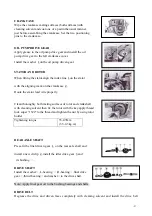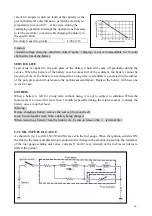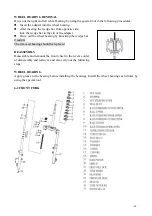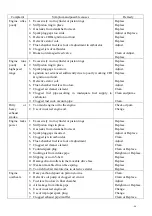
rate of 0.4 ampers (which is a tenth of the capacity of the
present battery) Be carefull not to permit the electrolyte
temperature to exceed 45
℃
, at any time, during the
recharging operation. Interrupt the operation, as necessary,
to let the electrolye cool down. Recharging the battery to
the specification.
Caution:
constant-voltage charging ,otherwise called “quike” charging, is not recommendable for it could
shorten the life of the battery.
SERVICE LIFE
Lead oxide is applied to the pole plate of the battery which will come off gradually during the
service. When the bottom of the battery case becomes full of the sediment, the battery cannot be
used any more. If the battery is not charged for a long time, lead sulfate is generated on the surface
of the pole plate and will deteriorate the performance(sulfation). Replace the battery with new one
in such a case.
STORING
When a battery is left for a long term without using, it is apt to subject to sulfation. When the
motorcycle is not used for more than 1 month (especially during the winter season), recharge the
battery once a month at least.
Warning :
Before charging a battery, remove the seal cap from each cell.
Keep fire and sparks away from a battery being charged.
When removing a battery from the motorcycle, be sure to remove the
○
-
terminal first.
5-5 COIL TYPE FUEL GAUGE
As shown in fig. 1,coils N1,N2,N3 and N4 are set in the fuel gauge. When the ignition switch is ON,
the float in the tank is displaced in proportion to the change in the amount of gasoline, the resistance
of the fuel gauge sending unit varies, currents I1 and I2 vary, strength of the fuel meter rotates to
deflect the pointer.
Electrolyte specific gravity.
1.28 at 20
℃
- 36 -
















































